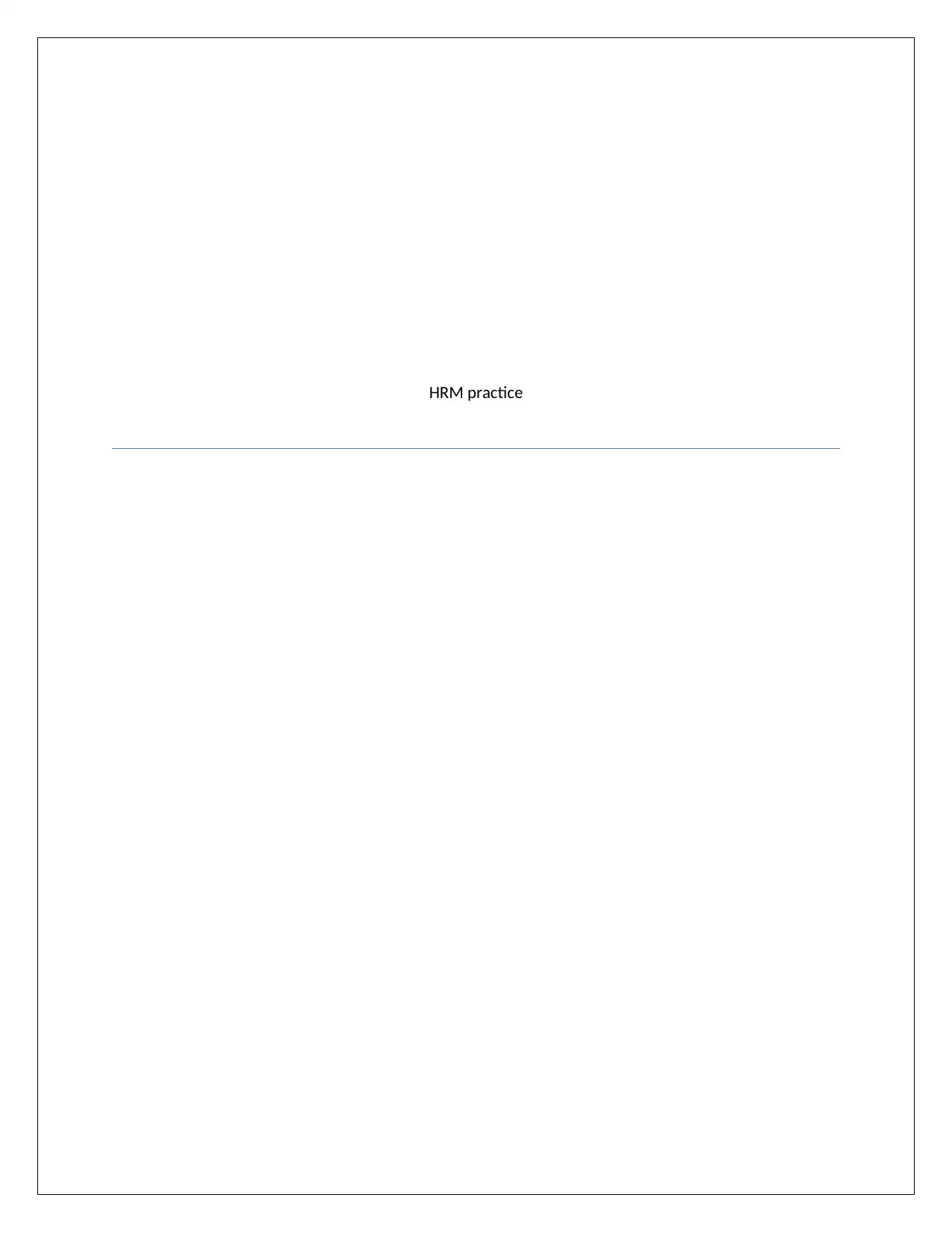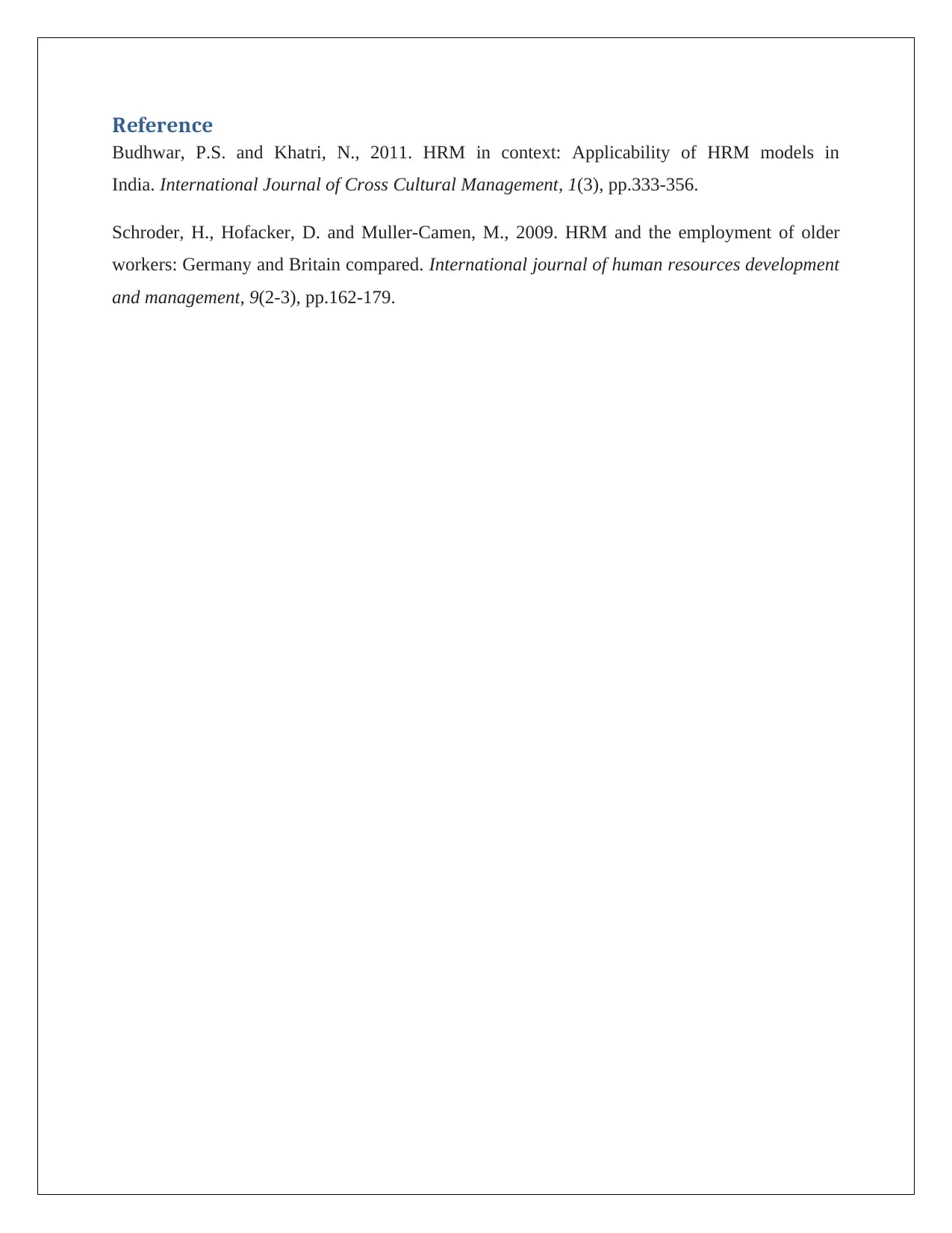Comparative Analysis of HRM Practices in India and Germany
VerifiedAdded on 2022/09/05
|3
|360
|20
Report
AI Summary
This report provides a comparative analysis of Human Resource Management (HRM) practices in India and Germany. The study examines key aspects such as employee engagement, which includes codetermination and works councils in Germany, and the impact of employment contracts and minimum wage policies in both countries. The report highlights the significance of training and development in Germany, contrasting it with the recruitment and selection processes and the adoption of high-performance work practices in India. Furthermore, the report addresses the legal frameworks governing employment, including the Companies Act and Contract Act in India, and the minimum wage regulations in Germany, offering a comprehensive overview of the HRM landscape in both countries. The differences in performance management and the termination of employees are also discussed. The report is based on existing research and provides insights into the diverse approaches to HRM in these two countries.
1 out of 3










![[object Object]](/_next/static/media/star-bottom.7253800d.svg)